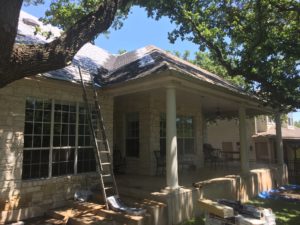 Wood siding is a classic choice that has been used for many centuries. It provides a timeless look that is suitable for virtually any type of architecture. Modern wood siding is available in several styles, including clapboard, hand-cut shakes, shingles and clamshells. Wood siding is an environmentally friendly choice that is available in a variety of woods, including cedar, redwood, cypress, spruce and pine. In many areas, it is so prevalent that many people never consider another type of siding.
Wood siding is a classic choice that has been used for many centuries. It provides a timeless look that is suitable for virtually any type of architecture. Modern wood siding is available in several styles, including clapboard, hand-cut shakes, shingles and clamshells. Wood siding is an environmentally friendly choice that is available in a variety of woods, including cedar, redwood, cypress, spruce and pine. In many areas, it is so prevalent that many people never consider another type of siding.
Although wood siding is beautiful, it must be protected from insects and water. If exposed to water, wood siding can twist, rot, crack or warp. Cedar and redwood have a natural resistance to insects, but other types of wood siding can be damaged by termites, carpenter ants or certain beetles. Protection is typically achieved by staining, varnishing or painting the wood siding every few years. Most homeowners prefer Wood Siding & Staining to enhance the natural wood.
Wood Siding & Staining – Types of Stains for Wood Siding
There are three primary types of stains that are typically used on wood siding. Clear stains provide protection without altering the wood’s natural color. Solid-color stains are available in many colors and feature an opaque, uniform finish that obscures the natural color of the wood; however, some of the wood’s texture and grain pattern will show through. The third type is semi-transparent stain, which is the most popular option for wood siding. Depending on the color chosen and how much stain is applied, semi-transparent stains may add just a hint or color or completely change the color of the wood. Unlike solid-color stains, semi-transparent stains do not obscure the characteristics of the wood.
The Effect of Wood Type on Color
The type of wood used to produce siding can affect the color. For example, when you stain siding made from red cedar, the color will normally be much darker and richer than if you used the same stain on siding made from white cedar.
Steps Involved
Stain should only be applied to dry wood. Prior to applying the stain, a primer should be applied. Primer serves as the stain’s base and helps ensure that the color will be even. Primer also provides a supplemental moisture barrier. Some types of wood siding are available already primed by the manufacturer, making it faster and easier to stain.
When it comes to the application of the stain, there is no substitute for quality equipment, proper technique and experience. Hiring a qualified contractor helps you ensure that the color will be as expected, all areas of the siding will be covered and any troublesome areas will be properly addressed.
However, it is often possible for homeowners to perform touch-ups or stain small areas of the siding. If you choose to handle the task yourself, start by making sure that the siding is clean. Remove any mold or mildew and wash away any accumulations of dirt. If necessary, strip existing paint or stain and repair any damaged areas. Carefully follow the manufacturer’s instructions, including the type of applicator, the recommended brush technique and the time between coats. Make sure that the forecast does not predict rain and that temperatures will remain above the manufacturer’s specifications for the duration of your project.
Contact Alpha Roofing for Help
Alpha Roofing is an Austin roof contractor and has extensive experience in the installation of wood siding. We can help you with your siding decisions, repair your roof, install a metal roofing system or asphalt shingles, repair your chimney or handle a variety of other tasks. We have a strong commitment to customer satisfaction and provide superior work at competitive prices. If you would like more information about Wood Siding & Staining or a free quote, call (512) 777-1086 or complete our online form.
